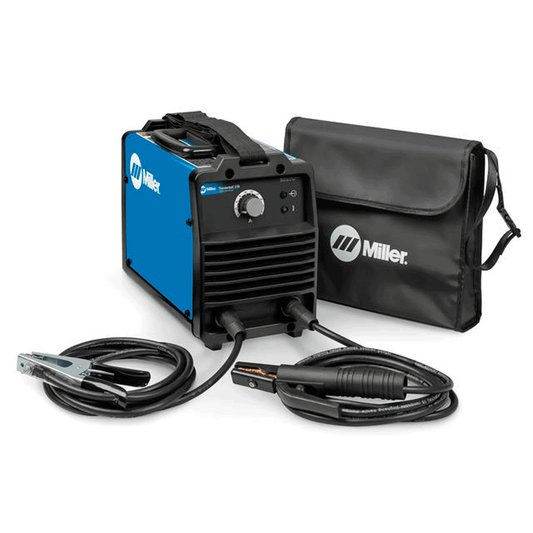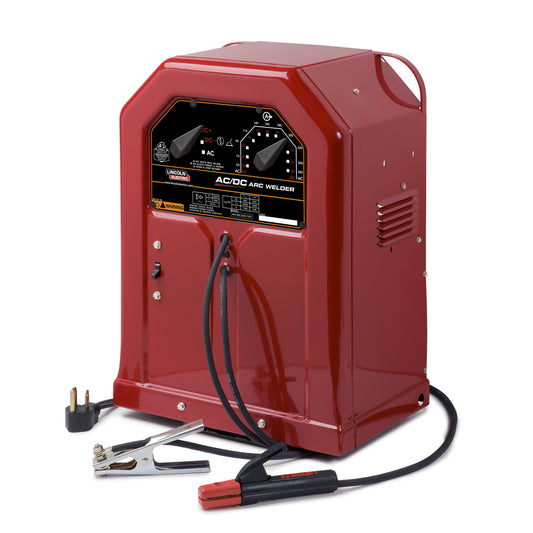Stick welding, also known as Shielded Metal Arc welding (SMAW), is one of the most popular and versatile welding methods for beginners and professionals alike. Known for its simplicity, durability, and ability to handle outdoor conditions, stick welding is an excellent place to start for anyone new to the craft. Whether you're planning to tackle DIY projects, farm repairs, or industrial tasks, understanding the basics of stick welding will help set you up for success.
What Is Stick Welding?
Stick welding is a manual arc welding process that uses a consumable electrode coated in flux. When the electrode makes contact with the metal, it creates an electric arc that melts both the electrode and the base material, forming a strong weld. The flux coating produces a shielding gas and slag layer, protecting the weld from contaminants in the air.

Why Choose Stick Welding?
Stick welding is an ideal choice for beginners due to its straightforward setup and versatility. Here are some of the key benefits:
- Affordable and Accessible: Requires minimal equipment compared to other welding processes.
- Works on Various Metals: Can be used on steel, stainless steel, and cast iron.
- Excellent for Outdoor Use: The flux coating protects the weld from wind and moisture.
- Durable and Strong: Creates high-strength welds that hold up in tough environments.
Essential Stick Welding Equipment
Before you get started, you'll need a few essential tools:
- Welding Machine: A basic stick welder will suffice for most beginner projects.
- Electrodes: Common sizes for beginners include 6010, 6011, 6013, and 7018, depending on your project needs.
- Protective Gear: Helmets, gloves, fire-resistant clothing, and safety boots.
- Ground Clamp: Ensures a stable electrical connection.
- Wire Brush and Chipping Hammer: For cleaning slag from the finished weld.
How to Stick Weld: Step-by-Step
Set Up Your Workspace: Make sure you're working in a well-ventilated area, free from flammable materials.
Prepare the Metal: Clean the surface with a wire brush or grinder to remove any rust, paint, or debris.
Set Your Machine: Choose the correct amperage for your electrode size (check the electrode box for guidance).
Strike an Arc: Tap or drag the electrode across the metal surface to start the arc, similar to striking a match.
Maintain a Steady Motion: Keep a consistent arc length (about the same distance as the diameter of the electrode) and move at a steady pace.
Chip and Clean: Once cooled, use a chipping hammer and a wire brush to remove the slag and reveal the finished weld.
Common Stick Welding Mistakes (and How to Avoid Them)
- Inconsistent Arc Length: Can cause weak welds or excessive spatter. Keep your arc length steady.
- Wrong Electrode Angle: Ideally, hold your electrode at a 15-30 degree angle away from the direction of travel.
- Incorrect Amperage: Too high can burn through the metal; too low can cause the arc to extinguish. Always follow electrode recommendations.
- Poor Surface Preparation: Always clean the base material before welding to avoid weak welds.
Safety Tips for Stick Welding
- Always wear a welding helmet with the proper shade lens.
- Use fire-resistant clothing and gloves.
- Ensure proper ventilation to avoid inhaling fumes.
- Keep a fire extinguisher nearby.
Get Started with Confidence
Stick welding doesn't have to be intimidating. With the right equipment, a little practice, and a focus on safety, you'll be laying down strong welds in no time. Whether you're tackling a home project or preparing for industrial repairs, stick welding is a skill worth mastering.
For all your welding needs, don't hesitate to reach out to Baker's Gas and Welding. Call us at 877-930-5690 or email support@bakersgas.com for expert advice, high-quality equipment, and unbeatable customer service.



